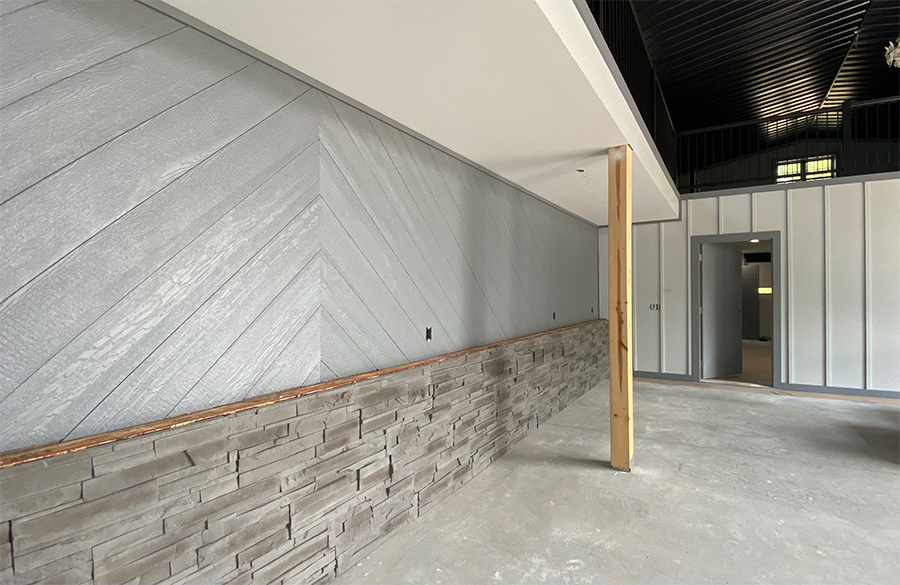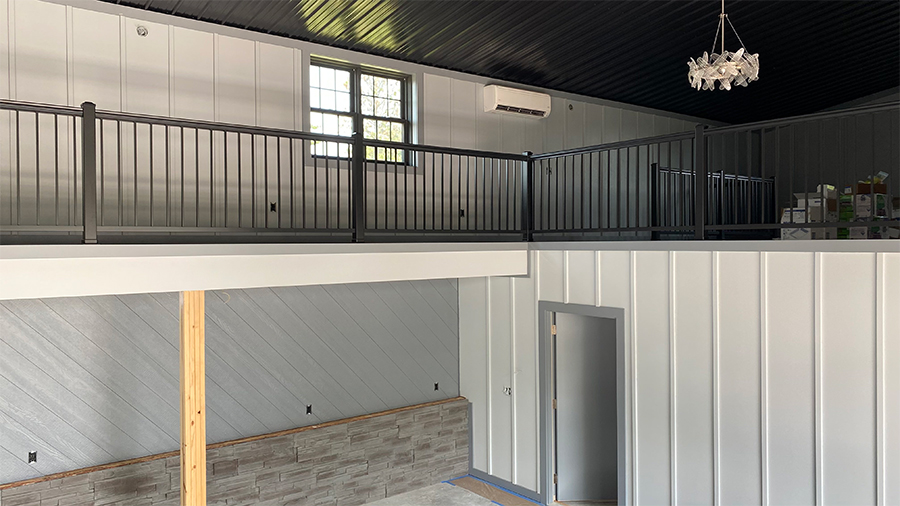Business Advice4 min
Everything You Need to Know About LP® SmartSide® Trim & Siding for Your Interior
Siding is traditionally thought of as an exterior product, but LP® SmartSide® products are challenging this by offering innovative interior solutions. Building professional Kyle Stumpenhorst discusses how he leveled up some of his builds with a board and batten interior technique.
Why Use LP SmartSide Products for Your Interior?
"Using LP SmartSide trim on the interior gives you unlimited possibilities," says Stumpenhorst. "I like the ease of working with longer lengths and fewer joints." LP SmartSide Trim & Siding comes in lengths up to 16 feet long. Along with superior length offerings LP SmartSide products come primed, making painting a breeze and allowing for faster install time than fiber cement products.
What is LP SmartSide Siding Made of?
LP SmartSide Trim & Siding products are made from engineered wood that is treated with our proprietary SmartGuard® process. With four components of protection, the process adds strength and helps our products withstand impacts, freeze/thaw cycles, high humidity, and helps resist fungal decay and termites.
LP SmartSide Interior Texture Styles
Many LP SmartSide products come in both brushed smooth and cedar texture finish. The most common use for interiors is a board and batten style, which is a type of siding where thin strips of wood molding-or "battens"-are placed over the seams of panel boards. The result is an aesthetic that is both rustic and chic with the strong vertical lines providing shadows and textures to the home's interior.
"On a recent build, I replicated the board and batten look by simply installing drywall like most normal residential interiors and then used LP SmartSide trim to add battens to an otherwise simple flat wall. Once done you couldn't even notice it was just drywall underneath," said Stumpenhorst.
Check out the build here.


FAQs About LP SmartSide Trim & Siding
What texture should you put on your walls?
Smooth siding such as Brushed Smooth is typically preferred for interior installation. When you add board and batten wall panels to the interior, you are already adding texture to a previously flat surface with the dimension of the batten elements.
How should studs be spaced during installation?
38 and 76 Series Panel Siding may be installed on studs spaced a maximum of 16 inches o.c.
Do I need special tools to work with LP SmartSide Trim & Siding?
No, LP SmartSide Trim & Siding is designed to be installed using common woodworking tools. Visit our YouTube channel for an 8-part installation series to get started.
Click here for more answers to frequently asked questions.
Want more ideas for your board and batten installation? Check out our inspiration gallery.
Continue Reading
Resiliency Solutions
5 minIntroducing LP® SmartSide® ExpertFinish® Naturals Collection™: Nature-Inspired Beauty Meets Engineered Performance
We're excited to introduce the LP® SmartSide® ExpertFinish® Naturals Collection™, a bold new addition to our trusted line of engineered wood siding and trim that delivers the warmth and beauty of nature with the advanced protection and performance builders and homeowners expect.
Labor Solutions
5 minChoosing the Right LP® Structural Solutions Product for Your Build
When it comes to building strong, reliable, and high-performing structures, the materials you choose matter. At LP Building Solutions, we understand that every project, whether it's a single-family home or a multifamily development, requires structural components that meet your needs for strength, durability, and efficiency.
Sustainability Solutions
5 minBuilding a More Sustainable Future with LP Building Solutions
In today's world, sustainability is no longer just a buzzword, it's a blueprint for responsible living and smarter building. As the construction industry seeks ways to reduce its environmental footprint, LP Building Solutions is focused on providing innovative building materials for eco-conscious builders to help reshape what it means to build sustainably
News & Stories3 min
History of Partnership with Gary Sinise Foundation
The LP Foundation is a proud partner of the Gary Sinise Foundation, which supports wounded veterans in several ways. You can learn more about the LP Foundation here.